
Harvepino / shutterstock.com
Rheumatology in China is a relatively young discipline, but it has developed exponentially over the past three decades. In this article, we review the history of rheumatology in China and advances in clinical care, research and education in this field.
The Founding Father
Naizheng Zhang, MD, is widely regarded as the father of rheumatology in China. Rheumatology virtually did not exist in China before 1960, and its development really started at Peking Union Medical College Hospital (PUMCH), founded by the U.S.-based Rockefeller Foundation in 1921, one of the most prestigious medical institutions in China.
Dr. Zhang, who served in the Department of Medicine at PUMCH, was chosen by the Chinese government to study at the Institute of Rheumatology, Medical Sciences in the former Soviet Union in 1959. Dr. Zhang returned to China in 1960 and initiated a Clinic for Rheumatology Service at PUMCH. The Cultural Revolution and subsequent economic difficulties, unfortunately, delayed the further development of rheumatology for over a decade.
Under the leadership of Dr. Zhang in 1979, rheumatology clinical and investigational units were established in a few major hospitals in Beijing and Shanghai. Several internists with a special interest in rheumatology became the pioneers of rheumatology in China, including Dr. Zhang, Yi Dong, MD, and Ming Jiang, MD, of PUMCH; Xinhua Cai, MD, and Guiying Shi, MD, of the Chinese General Army Hospital; and Minxin Huang, MD, and Shunle Cheng, MD, of the Shanghai Second Medical University. Training rheumatology fellows in China began the same year, and the first group of trainees included Fulin Tang, MD, Qingyu Zeng, MD, Mengxue Yu, MD, and Donghai Wu, MD, all of whom trained under the mentorship of Dr. Zhang.
In 1982, as the rheumatology workforce increased in size, a rheumatology consortium was formed. Three years later, the Chinese Rheumatology Association (CRA) was officially founded, with Dr. Zhang as its inaugural president.1
Serologic Testing & Epidemiologic Study
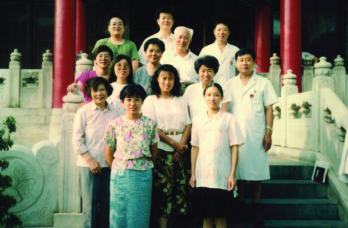
First row from left: Ms. Qinfang Song, Ms. Li Shi, Ms. Yanping Shi, Xiaodan Gan, MD. Second row from left: Xuejun Zeng, MD, Chunli Yan, Ming Jiang, MD, Yi Dong, MD, Mengxue Yu, MD. Third row from left: Xiaofeng Zeng, MD, Qingping Yao, MD, PhD, Naizheng Zhang, MD, Fulin Tang, MD. Not pictured: Dr. Fengchun Zhang.
In the early 1980s, rheumatoid factor was the only serologic test for any rheumatic illness available in China. Fulin Tang, MD, an attending rheumatologist at PUMCH, was sent by Dr. Zhang to study at the University of Southern California in Los Angeles. He brought back experimental methodologies for measuring anti-nuclear antibodies. These early serologic tests were gradually introduced to other hospital laboratories across the country.
The epidemiology of specific rheumatic diseases in China was not studied until 1984. In partnership with the International League against Rheumatism (ILAR) and the Asian and Pacific League Against Rheumatism (APLAR), Dr. Zhang led these initial studies. The prevalence was 0.2–0.93% for rheumatoid arthritis, 70 per 100,000 for systemic lupus erythematosus, 0.2–0.54% for ankylosing spondylitis, 5.1–20.8% for osteoarthritis and 0.15–1.98% for gout.2
In the early 1990s, an epidemiologic study of Sjögren’s syndrome was conducted under the leadership of Dr. Zhang, which was financially supported by domestic resources in China. This study found the prevalence of Sjögren’s syndrome in China ranges from 0.22–0.77%, depending on the criteria used. These results were published in the Journal of Rheumatology in 1995.3 Prior to this study, Sjögren’s syndrome was thought to be quite rare in China; it is now recognized as a relatively common rheumatic disease.
Teaching & Training the Workforce
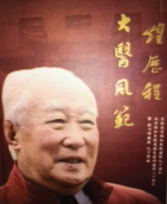
Dr. Zhang
Dr. Zhang took the helm as the president of the CRA from 1985–96. Under his leadership, patient care, education and research in rheumatology advanced rapidly, as did the rheumatology workforce. Training via the CRA took place via regional and national rheumatology conferences with lectures from rheumatology experts. These were particularly valuable for underserved provinces in China. While Dr. Zhang was president, a couple of rheumatology textbooks were written and translated. The Chinese Journal of Rheumatology, the official journal of the CRA, has been available to Chinese physicians since 1995.
After Dr. Zhang’s retirement, the CRA has been led by Yi Dong, MD, Fulin Tang, MD, Fengchun Zhang, MD, Zhanguo Li, MD, and currently Xiaofeng Zeng, MD. Under the direction of these renowned rheumatologists, rheumatology in China has progressed tremendously over the past three decades.
Physician attendees at the first few CRA annual meetings numbered several dozen, and only several rheumatologists from China were able to attend APLAR in the 1990s. In addition, the largest rheumatology department in China, the Department of Rheumatology of PUMCH, comprised only a handful of physicians. Today, however, PUMCH has approximately 35 rheumatologists, and in May 2018, the most recent CRA Annual Congress in Fuzhou, China, had approximately 3,500 attendees. Approximately 120 rheumatologists from China attended the ACR/ARHP Annual Meeting last year, a huge increase from the small number who attended in the 1990s.
From the creation of the specialty of rheumatology in China to modern advances, the essential and substantial contributions of Dr. Zhang have been recognized and appreciated in China. Unfortunately, Dr. Zhang passed away at age 93 in 2014. We remember and honor Dr. Zhang as an outstanding physician, researcher, educator and mentor in rheumatology. Several of Dr. Zhang’s protégés have left China, and now work in the U.S., England and Australia. On behalf of his apprentices and the CRA, we salute Dr. Zhang once again.
Modern Rheumatology in China
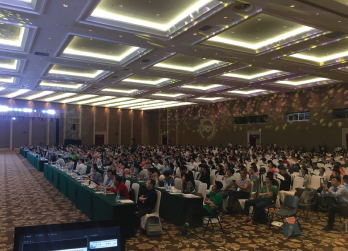
The CRA Annual Congress in Fuzhou, China, in May 2018, attracted approximately 3,500 attendees.
Chinese studies of rheumatic disease have made substantial achievements. From the early epidemiologic study of Sjögren’s syndrome to further characterization of the clinical phenotypes and immunologic profiles of the Chinese patients, to the GWAS study, clinical and translational research on Sjögren’s syndrome has made huge progress.4,5
Registries generate patient benefit in the era of big data, such as the Chinese SLE Treatment and Research Group (CSTAR), a national registry of patient clinical data and blood biobank with 104 participating centers since its establishment in 2009.6 The Chinese Registry of Rheumatoid Arthritis (CREDIT) has also been established.7
A long-term clinical study of the Chinese traditional drug Tripterygium wilfordii Hook F in rheumatic disease and a recent randomized clinical trial show the herbal remedy is “not inferior to methotrexate,” and even better when employed in combination with methotrexate in controlling rheumatoid arthritis disease activity.8
Moving Forward
In the U.S., there are approximately 300 million people, and 5,500–6,000 full-time rheumatologists or providers; this means that there are 1.61–3.07 providers per 100,000 people.9 In China, there are 1.4 billion people and 8.61 million physicians, including 7,197 rheumatologists or rheumatology providers. It is estimated that China may have 0.2 billion patients with rheumatic diseases.
It is imperative to train more rheumatologists and physicians with a special interest in rheumatology to increase the Chinese rheumatology workforce. To provide high-quality care, the CRA has begun to develop national guidelines for the treatment and management of common rheumatic diseases, such as rheumatoid arthritis and gout.
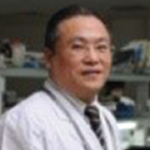 Xiaofeng Zeng, MD, is a professor of medicine and chief of the Department of Rheumatology and Immunology at Peking Union Medical College Hospital, and current president of the Chinese Rheumatology Association, Beijing, China.
Xiaofeng Zeng, MD, is a professor of medicine and chief of the Department of Rheumatology and Immunology at Peking Union Medical College Hospital, and current president of the Chinese Rheumatology Association, Beijing, China.
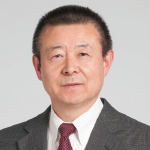 Qingping Yao, MD, PhD, is a professor in the Department of Medicine and chief of the Division of Rheumatology, Allergy and Immunology, at Stony Brook University School of Medicine, Stony Brook, N.Y.
Qingping Yao, MD, PhD, is a professor in the Department of Medicine and chief of the Division of Rheumatology, Allergy and Immunology, at Stony Brook University School of Medicine, Stony Brook, N.Y.
Acknowledgment
The authors thank Dr. Min Shen for her coordination and review of this article.
References
- History of the Chinese Rheumatology Association. Chin J Rheumatol. 2015 May 14.
- Zeng QY, Chen R, Darmawan J, et al. Rheumatic diseases in China. Arthritis Res Ther. 2008;10(1):R17.
- Zhang NZ, Shi CS, Yao QP, et al. Prevalence of primary Sjogren’s syndrome in China. J Rheumatol. 1995 Apr;22(4):659–661.
- Zhao Y, Li Y, Wang L, et al. Primary Sjogren syndrome in Han Chinese: Clinical and immunological characteristics of 483 patients. Medicine (Baltimore). 2015 Apr;94(16):e667.
- Li Y, Zhang K, Chen H, et al. A genome-wide association study in Han Chinese identifies a susceptibility locus for primary Sjogren’s syndrome at 7q11.23. Nat Genet. 2013 Nov;45(11):1361–1365.
- Leng X, Li M, Li X, et al. Chinese lupus treatment and research group (CSTAR) registry: X. family history in relation to lupus clinical and immunological manifestations. Clinical and experimental rheumatology. Clin Exp Rheumatol. 2018 Jan–Feb;36(1):81–87.
- Jin S, Li M, Fang Y, et al. Chinese Registry of rheumatoid arthritis (CREDIT): II. prevalence and risk factors of major comorbidities in Chinese patients with rheumatoid arthritis. Arthritis Res Ther. 2017 Nov 15;19(1):251.
- Lv QW, Zhang W, Shi Q, et al. Comparison of Tripterygium wilfordii Hook F with methotrexate in the treatment of active rheumatoid arthritis (TRIFRA): A randomised, controlled clinical trial. Ann Rheum Dis. 2015 Jun 7;74(6):1078–1086.
- Battafarano DF, Ditmyer M, Bolster MB, et al. 2015 American College of Rheumatology workforce study: Supply and demand projections of adult rheumatology workforce, 2015–2030. Arthritis Care Res (Hoboken). 2018 Apr;70(4):617–626.
